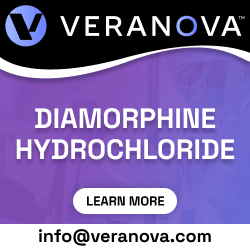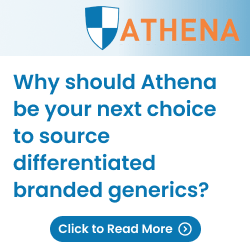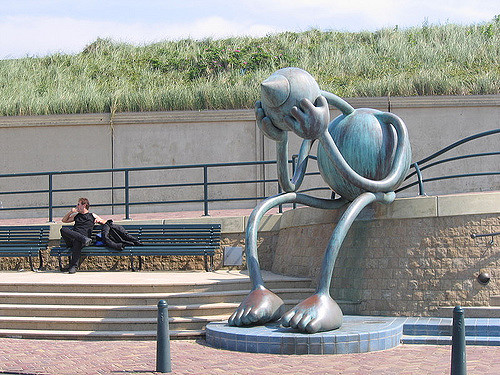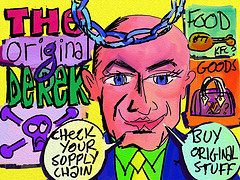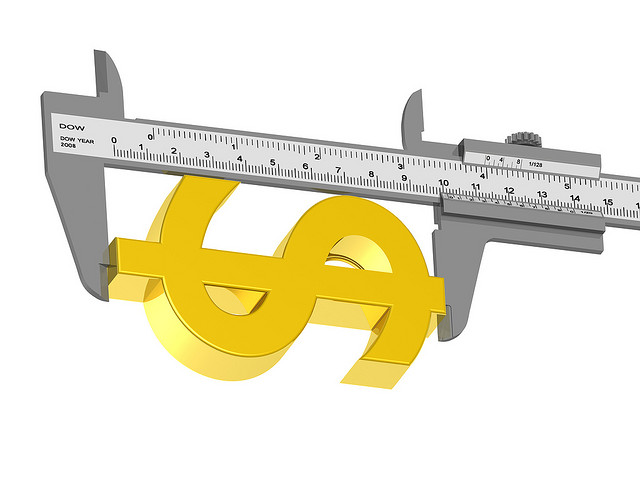This week, Phispers delves into Pfizer’s acquisition of Medivation and its impact on Sanofi. There is also news on antipsychotic drug Abilify, besides snippets on a lawsuit against Valeant, Mylan’s price hikes and more quality snags that were unveiled at Pfizer’s plant near Chennai. Read on.
Rough week for Sanofi as FDA
delays its diabetes drugs, while Pfizer walks away with Medivation
Pfizer
agreed to pay US $14 billion in cash for Medivation in a deal that adds the
prostate cancer drug Xtandi
to its product portfolio.
Medivation was one of the few independent companies with a cancer treatment
that is selling well. Xtandi currently generates about US $ 2 billion a year in
annual sales.
The acquisition has come as a setback
for French drug maker Sanofi that spent five months pursuing Medivation. At one point, Sanofi even attempted to replace Medivation’s board and force a deal.
There
was another setback for Sanofi,
as it saw the launch of its diabetes combination medicine get delayed until
November this year. Sanofi spent US $ 245 million on a priority
review voucher to beat Danish drug maker Novo
Nordisk to market with a diabetes drug that pairs its best-selling
medicine Lantus
(a basal insulin) with lixisenatide. However, the FDA’s fast-track review pushed out the launch of the combination till at least November.
The FDA asked Sanofi for more data on the dual-drug delivery pen – a device that triggered debate during an FDA advisory panel review in May this year.
The FDA decision on Novo’s product is due next month. With this unexpected delay, Novo could get more than a two months’ head start over Sanofi.
FDA warns against the
use of antipsychotic drug Abilify
In the US, patients taking the antipsychotic drug Abilify have
reported uncontrollable urges to gamble, binge eat, shop, and have sex, according
to the FDA. The regulator issued a warning this week
on the drug, which is one of the top-selling prescription medications in the
United States.
Other serious side effects of the drug include a higher chance
of developing diabetes and hyperglycemia, and increased risk of suicide among
patients under the age of 24.
Also known as aripiprazole,
the drug is used to
treat schizophrenia, and can be used in combination with other drugs to
treat depression. In the US, 1.6 million patients received Abilify
prescriptions last year.
The warning comes amid pending class-action lawsuits against
the manufacturer of Abilify – Otsuka America Pharmaceutical. The class-action suits allege the company didn’t properly warn patients about the possibility of impulse-control issues.
However, these problems are rare. In the 13 years since the
drug was approved, there have been only 167 reports of patients experiencing
significant impulse-control problems, according to the FDA.
Counterfeit pills may
have killed the late singer Prince
A little over a year ago, the Drug Supply Chain Security
Act (or Drug Quality and Security Act) became effective in the United States. The law was introduced to secure the supply chain of medicines and restrict counterfeit drugs – an industry estimated to be bigger than Pfizer and GSK put
together.
It seems that regulatory agencies still have a lot of work to do in this
area. A mis-labelled bottle of
pills found in the home of the late singer Prince contained the powerful
painkiller fentanyl, a synthetic opioid 50 times more powerful than heroin. Prince died on April 21 this year.
According
to sources close to the investigation, the pills were found in a bottle
of Aleve, an over-the-counter medication sold in the US that contains
the painkiller naproxen. Two dozen pills, found in one bottle, were falsely labelled as ‘Watson 385’ – an identifier for a mix of acetaminophen
(paracetamol)
and hydrocodone.
Valeant mired in trouble
with a lawsuit and faltering sales of female sexual dysfunction drug
According to a lawsuit
filed last week, Valeant
Pharmaceuticals refilled
patient prescriptions without their permission and directed them to buy expensive drugs in
order to boost sales. The lawsuit provides insight into how a mail-order pharmacy – Philidor Rx Services – assisted Valeant in directing prescriptions to its brand-name medicines over cheaper generic versions.
Meanwhile,
Valeant hired Paul Herendeen as its new chief financial officer, luring the
executive away from Zoetis,
the animal health products maker.
While
Valeant is busy battling
challenges on various fronts, its US $
1 billion acquisition of Sprout Pharmaceuticals of Addyi – the first medicine to combat female sexual dysfunction – is turning
out of be a bust, as it has reported meagre sales.
Pfizer’s plant in Chennai faces more compliance issues
Earlier this month, Pfizer had to halt production at a plant near Chennai in India, after a Pharmaceutical
Inspection Convention and Pharmaceutical Inspection Co-operation Scheme (PIC/S)
joint inspection highlighted quality concerns. The other regulators in the
PIC/S inspection were the Medicines and Healthcare products Regulatory Agency
of the UK (MHRA), the United States Food and Drug Administration (USFDA),
Therapeutic Goods Administration of Australia (TGA) and Health Canada.
Three
years ago, the plant was first cited with an FDA warning letter. Last year, when
Pfizer acquired the plant from Hospira, it was well aware of the quality issues.
But Pfizer was probably not aware of the extent of troubles that awaited it. Last
week, a GMP non-compliance report posted by European Medicines Agency (EMA) listed
that an inspection by the MHRA uncovered
a variety of critical issues, raising doubts on whether
the injectable products coming out of the facility are sterile or not.
MHRA inspectors found that employees were using aseptic processes that could allow for microbial contamination. Pfizer’s investigations into issues were not getting to root causes of problems, they said. All of the plant’s shortcomings were linked to employees who lacked the “scientific knowledge” to know what to do.
The MHRA withdrew the plant’s GMP certificate and has halted imports to the European Union of six injected antibiotics until the problems get addressed.
Mylan’s outrageous drug price hikes for EpiPen come under scrutiny
The EpiPen auto-injector, which reverses life-threatening
allergic reactions, is under scrutiny. In 2015, the drug had generated US $ 1.2
billion in sales for Mylan.
The EpiPen has been around since 1977, but Mylan acquired
the auto-injector in 2007. The EpiPen precisely calibrates the dosage of epinephrine.
The patient now pays
about 400 percent more for this advantage to receive a dollar’s worth of the life-saving drug. EpiPens were sold for about US $ 57 when Mylan acquired it. Today, it is being
sold at US $ 500 or more in the US.
Meanwhile, Senator Amy Klobuchar (District Minnesota) has
asked the US Federal Trade Commission and the Senate Judiciary Committee to investigate
price hikes undertaken by Mylan. Klobuchar is the ranking member of Senate
Judiciary Antitrust Subcommittee. And Senator Richard Blumenthal (District Connecticut)
wrote to the company for data about assistance programs for
patients and first responders. He also
demanded that Mylan lower its price.
Last year, Mylan raised the price on EpiPen — its biggest-selling product — twice by 15 percent (each time). Due to lack of competition, the
price hikes were easy.
Korea’s Celltrion ships first batch of biosimilar Remicade to US
Last week, a day after winning a lawsuit in the US, Korean pharmaceutical firm Celltrion shipped
the first batch of its biosimilar medicine -- Remsima – to the country. The lawsuit was on the sale of Remsima – an autoimmune disorder drug – in the US, the world’s largest pharmaceutical market.
Celltrion said that the move will accelerate the US launch of Remsima, a
biosimilar version of Janssen's
Remicade. Remsima has been on sale in Europe since 2013.
Pfizer will take charge of sales of Remsima in the US. The drug will soon be
available to patients in the US suffering from rheumatoid arthritis and
ulcerative colitis under the brand name of Inflectra.
Remicaid’s sales were in excess of US $
8 billion in 2015. Celltrion
CEO Kim Hyoung-ki has projected that the company will earn more than US $ 1.7 billion in the US market next year, assuming a
double-digit market share.
Four healthcare CEOs on the world’s top 20 severance packages list
Even though the Pfizer-Allergan US $ 160 billion merger did not go through, Allergan CEO’s Brent Saunders has little
to complain. In a recent Bloomberg
compilation, his severance package of US $ 140 million ranks in the top
20 of all S&P 500 CEOs.
Joining him in the top 20 are other CEOs of healthcare
companies such as McKesson (with a severance package of US $ 198 million),
Aetna (US $ 91 million) and Regeneron (US $ 90 million).
McKesson Corporation is an American company distributing
pharmaceuticals at a retail sale level and providing health information
technology, medical supplies, and care management tools.
Aetna is an American managed health care company, which sells
traditional and consumer directed health care
insurance plans and related services, such as medical, pharmaceutical, dental,
behavioral health, long-term care, and disability plans.
Regeneron is a US-based biotechnology company with four FDA approved products and over US $ 4 billion in revenues in 2015.
Impressions: 5524
Yesterday, on July 1, 2015, the Drug Supply
Chain Security Act (or Drug Quality
and Security Act) became effective in the United States.The law is designed to secure the supply chain of
medicines and restrict counterfeit drugs, an industry estimated to be bigger
than Pfizer and GSK combined.
Laws against counterfeit drugs have also led to the arrest of Toyota’s highest-ranking female employee for alleged smuggling banned painkillers from the U.S. to Japan… What exactly are counterfeit drugs? An
estimated market of $75 billion, by the World Health Organization’s own admission, “counterfeit
drug is defined differently in different countries”. What the FDA calls “fake medicine”, WHO calls any medicine, “which is deliberately and fraudulently mislabeled with respect to identity and/or source”. For this reason, Toyota executive Julie Hamp’s efforts to “disguise illegal drug tablets” of painkiller oxycodone, legal with a prescription in the U.S., while a narcotic in Japan, would also fall under the same, loose classification. Why is it such a big issue? Counterfeit
drugs present a big challenge for users of medicines since there is no easy way
for patients to know whether or not the medicines they consume are safe.The WHO believes
that between 1% and 10% of drugs sold around the world are counterfeits and
this number could be as high as 50% in some countries. The primary distribution channel for such products are
illegal pharmacies operating over the internet. However, it is when fake drugs get
mixed with the normal medicine supply chain that countless horror stories get
reported. We have decided to cover some headlines made in recent times. Recent impact of counterfeit drugs- 365 children died in Panama due to a “toxic cough syrup” in which pharmaceutical manufacturers used toxic brake fluid component, diethylene glycol instead of glycerine. - FDA
discovered
that foreign distributors had supplied unapproved, counterfeit versions of Roche’s Altuzan 400mg/16ml (bevacizumab), an injectable cancer medication unapproved in the United States but approved in Turkey. Lab tests found
that the injections contained no active ingredient. - Counterfeit
versions of orlistat (Alli), GlaxoSmithKline’s over-the-counter weight-loss medication, were distributed over the internet, which did not contain the active ingredient. The fake product had been made with varying amounts of a controlled substance called sibutramine instead (anorexiant, removed from the US market due to concerns about heart attack and stroke). - A
brand of Viagra in
India, Kamagra, could not be sold outside India due to patent laws. So while Kamagra
was not a counterfeit drug in India, the success of Kamagra made it available
in other countries at prices much lower than Viagra. - In early 2008, ‘fake’ heparin based medicines caused deaths in the U.S. and other parts of the world. Chinese producers, trying to realize cost saving opportunities, had added a potentially toxic substance called ‘over-sulphated chondroitin sulphate’ to pharmaceutical grade heparin. The counterfeit product was cheaper to make, did not offer the intended therapeutic effect and was difficult to differentiate with existing test methods. - FDA discovered counterfeit versions of Roche’s cancer drug Avastin had entered the U.S. supply chain. Two Turkish nationals were arrested for shipping the drugs to the United States with false customs declarations.
- A physician, supplied with a research version of onabotulinumtoxinA (Botox), which was much more concentrated than the actual dosage, and not intended for human use. The research version resulted in respiratory paralysis and near death for several patients, including the physician who was using it himself. A very profitable businessAn expert estimates that counterfeit drugs are significantly more profitable than selling illegal drugs like heroin or cocaine. A
$1000 investment in counterfeit prescription drugs can result in a $30,000
return, which is 10 times the profit rate of trafficking heroin. Another source reported that selling counterfeit Viagra (sildenafil) “can be as much as 2000 times more profitable” than selling cocaine.Finally, the criminal penalties for the sale of
counterfeit medications are far less than the penalties for selling illegal
narcotics. Given the variation in global prices of the same drug, supply of medicines with incorrect documentation
through internet based models is common practice. An international effort, Operation Pangea VIII, earlier in June, shut down 2,800 websites across, 115
countries and seized medicines worth $81 million. Bring it on! In addition to restricting the entry of
counterfeit products at different ports, FDA scientists have developed a counterfeit detection device, CD-3. A battery-operated, hand-held and
inexpensive tool, using CD-3 costs a
fraction of the price of existing laboratory-based and field-deployable
technologies. Africa, where the counterfeit drug problem
is the most prevalent, has also initiated trials of the CD-3 device. While detection is only part of the
solution, laws designed to implement product
serialization, a comprehensive system to track and trace prescription drugs
through the entire supply chain, have been drafted. ChallengesThe intent of track and
trace systems is to enable comprehensive product traceability (down to lot
number details) from the manufacturer to the patient. Europe, India, Nigeria, Brazil, China have all announced
measures to combat the counterfeit drug problem. However, there are differences in each country’s approach towards the implementation of product serialization. The lack of harmonization, to achieve compliance in
different countries, will impact production and packaging processes of many
pharmaceutical manufacturers with global operations. Given the scale of this
endeavor, the U.S. planned implementation timeframes for the Drug Supply Chain
Security Act are stretched across a 10-year period. Digital
solutions?In the meantime, some
pharmaceutical companies are already moving ahead of the curve. EMD Serono,
part of Merck
KGaA, launched a mobile application called Check My Meds TM for product verification and is already
available for download for U.S. patients.As some medicines and such apps are not available yet all over the world, where ever you are, it’s important to be careful, since problems with counterfeits can occur everywhere on
the planet.
Impressions: 2604
Why do “Americans pay, by far, the highest prices in the world for prescription drugs”?
This concern has reached an unprecedented level where government and non-government lawmakers are taking a very serious view of this problem. Hilary Clinton has already made it “a campaign priority” for her 2016 presidential election bid.
* Valeant pharmaceuticals
buys two heart drugs in February and increased their list prices by 525% and 212%. The reason, company was doing “our duty is to our shareholders and to maximize the value”
* Study published in the journal Neurology on the cost of multiple sclerosis treatments, found drugs originally costing $8,000 to $11,000, now cost about $60,000 per year. The cost of increase is at rates 5 to 7 times higher than prescription drug inflation. Drug costs in the United States currently are 2 to 3 times higher than Canada, the U.K. and Australia.
* The Wall Street Journal wrote
about “lawmakers in a handful of states stretching from California to Massachusetts, have introduced bills in a bid to force the pharmaceutical industry” to disclose their costs.
* In response to pressure
by Senators Bernie Sanders and Elijah Cummings, the inspector general of Health & Human Services (HHS) will investigate
how recent increases in generic drug prices, have impacted the Medicaid rebate program (for better understanding of the program and the reason why IMS data is different to company sales data, read this Forbes article
.
* Massachusetts Attorney General, Maura
Healey demands why prices of naloxone, which is used to reverse heroin overdoses, has “skyrocketed
” since a public health emergency was declared a year ago.
* The JAMA Oncology Study found that price of cancer drugs is
independent of novelty and yet cancer
drug prices have risen faster than prices in other sectors of health care.
The pharmaceutical
defense:
* The historical response, of the pharmaceutical industry, for
the reason behind high cost of drugs is that funds are needed to continuously
research and develop novel medicines.
* “The price charged for an individual drug is not a reflection of development costs,” says
Ken Kaitin, director of the Tufts Center for the Study of Drug Development.
* The Generic Pharmaceutical Association also states
that “since 2008, the price of brand drugs has almost doubled, but the price of generic drugs has been cut roughly in half.”
The counter argument:
In an interview
, Dr. Steve Miller CMO at Express Scripts said, “The industry is still innovating, but on a financial model of drug development that has little to do with science. The acquisition of Pharmasset by Gilead Sciences solely to obtain the rights to the HCV blockbuster Sovaldi is a good example. The drug was already through Phase III trials and Pharmasset had determined $36,000 per treatment was the right price; then Gilead bought the company, for $11 billion, and promptly added $50,000 to the asking price for Sovaldi. That’s not what is meant in recognizing an “innovative step.”
Pharmaceutical giant Actavis CEO, Brenton Saunders “growth pharma” model, which believes “the idea that to play in the big leagues you have to do drug discovery is really a fallacy” will not help win public sympathy.
When assessing the price increase of generic drugs, the United
State Senators mentioned
that the prices of “certain dosages or dose forms of a product have increased rapidly while prices for other doses remained flat or declined”. An example given is Fluconazole 100mg tablet having experienced a price increase of 954%, while
the 150mg actually had a price decline of 8%.
The reality:
Consistent with the conclusion in the JAMA Oncology study “that current pricing models are not rational, but simply reflect what the market will bear".
Expected action:
HHS conducted an investigation on generic drug price increases
in 2007 and recommended that generic drug makers pay rebates to state Medicaid
programs. The practice is currently standard for branded pharmaceuticals.
Although lawmakers are pushing this course of action, the inaction since 2007
and study on multiple sclerosis drugs shows limited benefit if generic drugs
are made to pay rebates.
A far more likely outcome will be a European model, where
federal health care programs like Medicare and Medicaid negotiate directly with
drug makers to get lower prices. This provision was added in the recent budget
of President Obama, but currently there is no progress.
While regulators create their legislation, the pharmaceutical
industry is in serious consolidation mode. If the Teva, Mylan deal comes through, and they combine, the options of
negotiating with generic companies are going to seriously reduce.
Impressions: 2665







